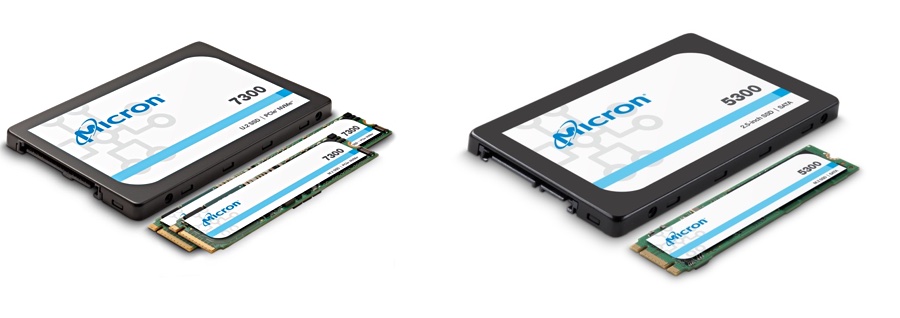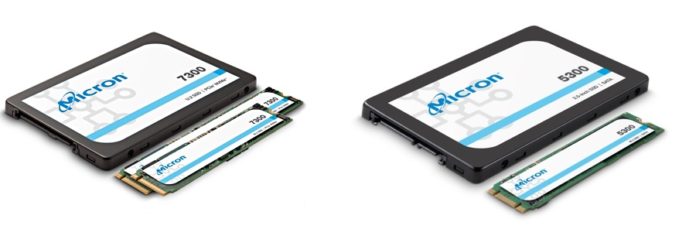Micron has broadened its data centre SSD range, moving the 9300 NVMe SSD technology down market, and adding a gumstick form factor. It has also replaced the 5200 SATA SSD with the 5300. The new lines all use the latest 96-layer TLC (3bits/cell) NAND.
The 7300 complements rather than replaces the 9300, according to Micron, which likens the 9300 to a Porsche GT3 and the 7300 to a Tesla Model 3.
Like the 9300 NVME SSD, the 7300 comes in capacity-optimised PRO and endurance-optimised MAX versions. The PRO supports a single drive write per day and the MAX version lifts this to three DWPD.
The 7300 is hot-pluggable and supports Flex capacity. This means admins can tune the SSD to get the right capacity and endurance balance.
The 9300 comes in the U.2 form factor. Both the PRO and MAX 7300s are available in U.2 and lower capacity gumstick formats.
Their latencies are 90μs/25μs read/write; slower than 9300’s 86μs/11μs. Mean time to failure is two million hours and they have a five-year warranty. They use a PCIe Gen 3.1 x 4, 2×2 NVMe interface. The capacities and speeds are:

The 7300 has half the maximum capacity of the 9300 PRO despite using denser 96-layer TLC NAND than the 9300’s 64-layer TLC. The 9300 PRO capacity reaches 15.36TB, the 7300 PRO has7.68TB, while the 7300 MAX’ 6.4TB is eclipsed by the 9300 MAX’s 12.8TB. You get less capacity for less money.
The 7300s will get a dual-port capability in the fourth quarter.

5300 line
The 5300 replaces the prior 5200. The 5200 SATA SSD line used 64-layer TLC NAND packaged into U.2 2.5-inch drives and came in Eco and Pro variants. There was also a 5210 ION using QLC flash. Micron’s 5300 drives use the denser 96 layer flash and are provided in Boot M.2 gumstick, Pro M.2 and U.2 formats, and a Max in U.2 form only. Micron has not pushed out a 5310 ION in QLC guise – perhaps one will come out in a few months..
All three 5300s use the SATA 6Gbit/s interface, have 3 million hours MTTF rating, like the 5200, and a five-year warranty. They support encryption, incorporate various data protection features and are hot-pluggable.
The Boot drive comes in a single 240GB capacity and is in the 1 drive write per day (DWPD) endurance category at 438 total terabytes written (TTBW).
The Pro is a capacity-optimised 1DWPD-class drive whereas the 5300 Max is an endurance-focused 3DWPD-class drive. The 5210s have random read latencies from 175μs to 200μs, and random writes in the 100μs to 650μs range.
The capacity and speed numbers are:

The 5300 Pro extends its capacity up to 7.68GB, a big jump on the the 5200 Pro, which topped out at 1.92GB.
5300 speeds are approximately the same as the 5210s.
Micron thinks demand for SATA SSDs will continue for some time despite the growing popularity of faster NVMe SSDs. The latter are taking over from SAS drives. It also thinks that TLC and QLC flash products will co-exist, with QLC products expanding the market rather than replacing TLC flash.








